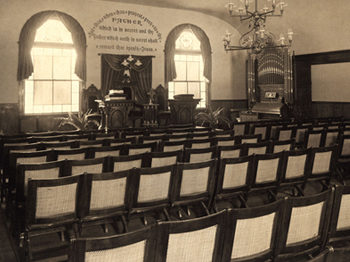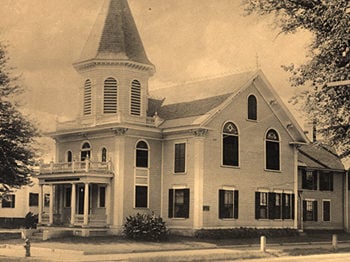This is the second in a three-part series about the growth of the Christian Science church in Concord, New Hampshire.
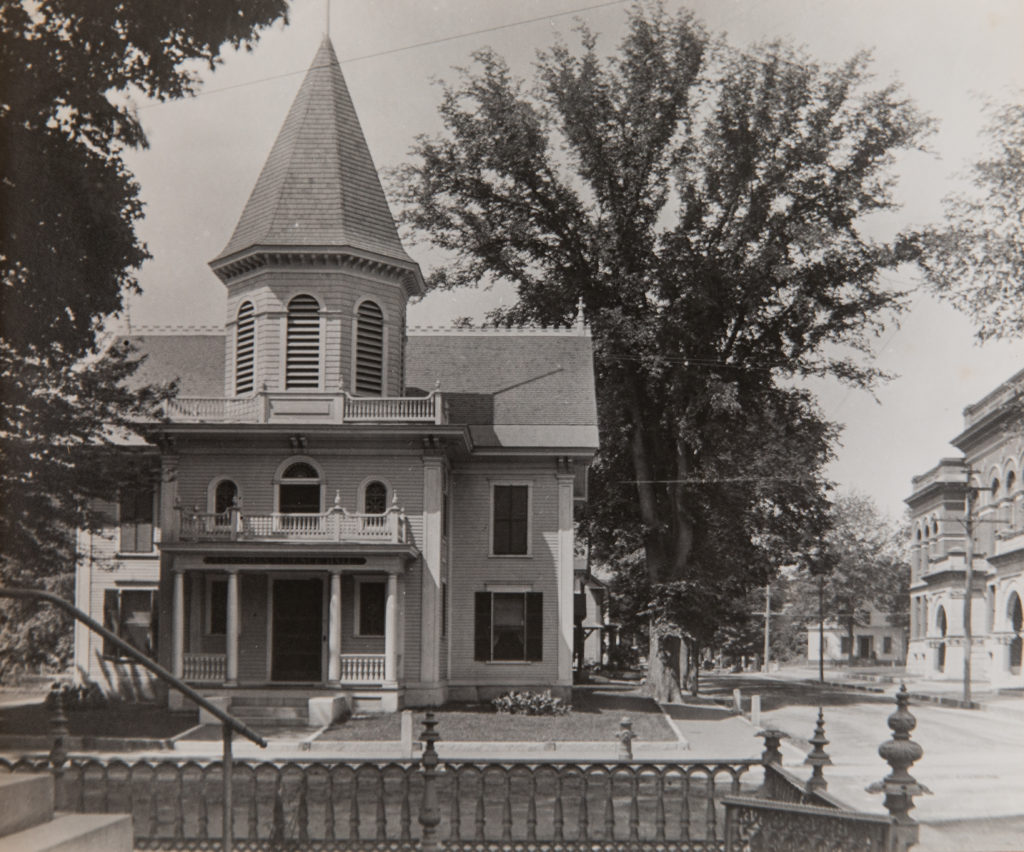
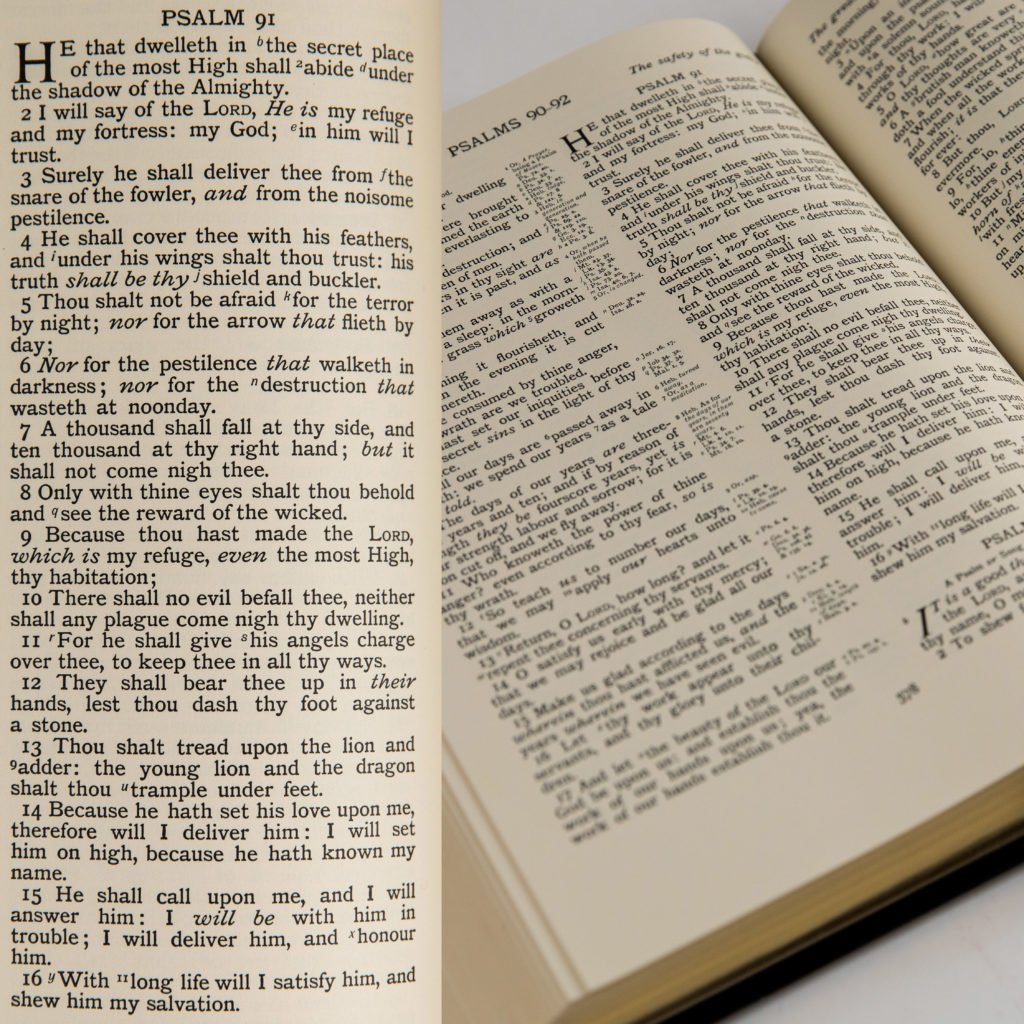
The ninety-first Psalm contains “more of meaning than is condensed into so many words anywhere else in all literature, except in the Sermon on the Mount,” Mary Baker Eddy told a group gathered in Christian Science Hall in 1898.1
The meeting was a memorable occasion. Christian Science Hall in Concord, New Hampshire, was newly remodeled, and Mrs. Eddy had invited the First Members of The Mother Church, The First Church of Christ, Scientist, in Boston, as well as the mayor and postmaster of Concord and a number of local businessmen, lawyers, and newspaper editors.2
“Every inch of standing room on this historic occasion was taken and many were turned away,” recalled Rev. Irving Tomlinson, one of Mrs. Eddy’s students who would later become First Reader in Concord.3
When Mrs. Eddy arrived, escorted by Edward Bates, another student who had traveled up from Boston for the service, all rose in respect as she made her way to the platform.
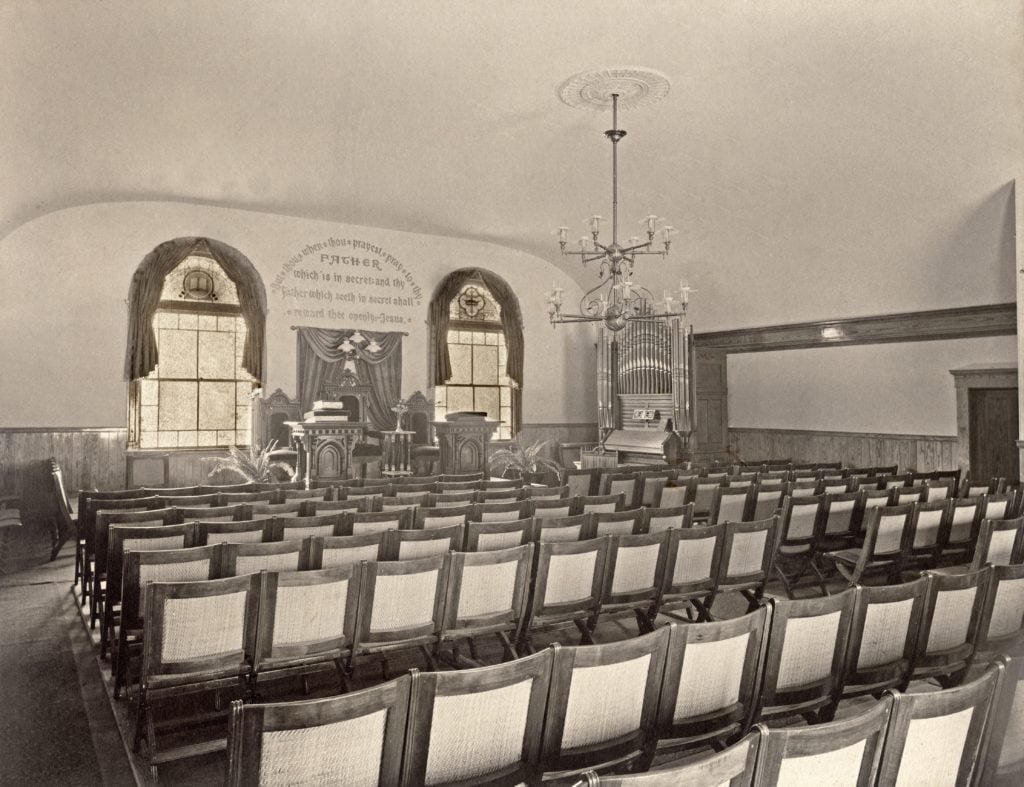
“Mrs. Eddy appeared at her best,” reported a local newspaper, “as sprightly and energetic as a young woman.”5
A hymn was sung by Harriet Harrison, “the charming soloist” who lost her voice for eight years and had recently been healed by Christian Science.6 And then Mrs. Eddy delivered an extemporaneous and inspiring sermon on the 91st Psalm.7
“Speaking for three quarters of an hour, with neither manuscript nor notes,” Rev. Tomlinson explained, “she appeared as free as though giving an address was to her an everyday occurrence. Her voice was resonant, beautifully modulated. She gave to every word its proper value and to every thought the right inflection. Her manner of presentation was so natural, so unaffected, that the attention of her auditors remained wholly on the message and not at all upon the messenger who gave it.”8
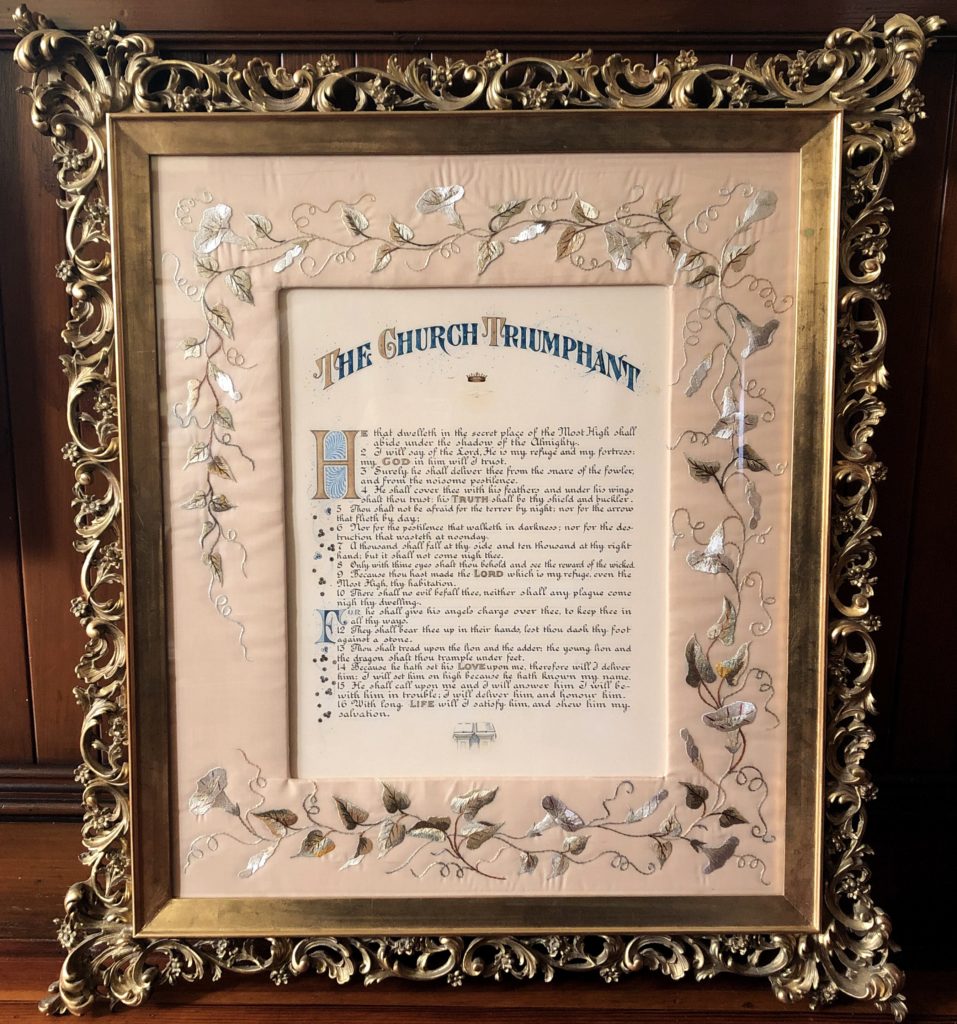
“She spoke extemporaneously,” noted a local Concord paper, “bringing out especially the theory of Christian Science as applied to practical life, and she explained the doctrines of her faith with such simplicity, and yet with such choice language and richness of illustration, that the address was pronounced one of the most instructive and ennobling ever delivered in this city. . . . Her followers here felt afresh the wondrous influence of her remarkable spirituality, and the very atmosphere of her presence seemed to thrill them with enthusiasm, and to awaken in them zeal.”9
Mrs. Eddy had first moved to Concord nearly ten years earlier in the summer of 1889, leaving behind the hustle and bustle of Boston for the quieter New Hampshire countryside. It was while living in a rented house at 62 North State Street that she published the landmark 50th edition of Science and Health with Key to the Scriptures as well as Retrospection and Introspection. In June of 1892, she moved to a modest farmhouse on the outskirts of town, where she would live for the next 15 and a half years. She named her new home “Pleasant View.”
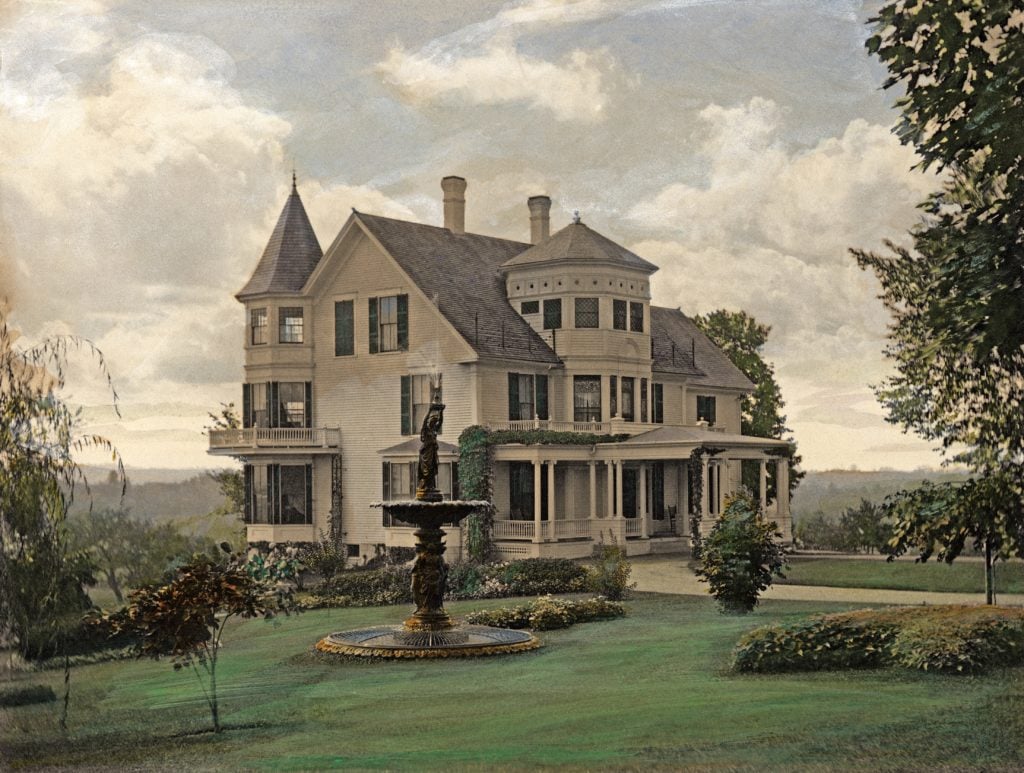
“A home should be something more than four walls,” Mrs. Eddy told Irving Tomlinson. “There should be about it noble trees, beautiful shrubbery, flowers, vines clambering over the house, and a rose garden.”
And that, Tomlinson noted, “is what she made of the desolate spot transformed into Pleasant View. . . .”11
Not long after transforming her own home, Mrs. Eddy would furnish another kind of home in downtown Concord. This one would be called Christian Science Hall.
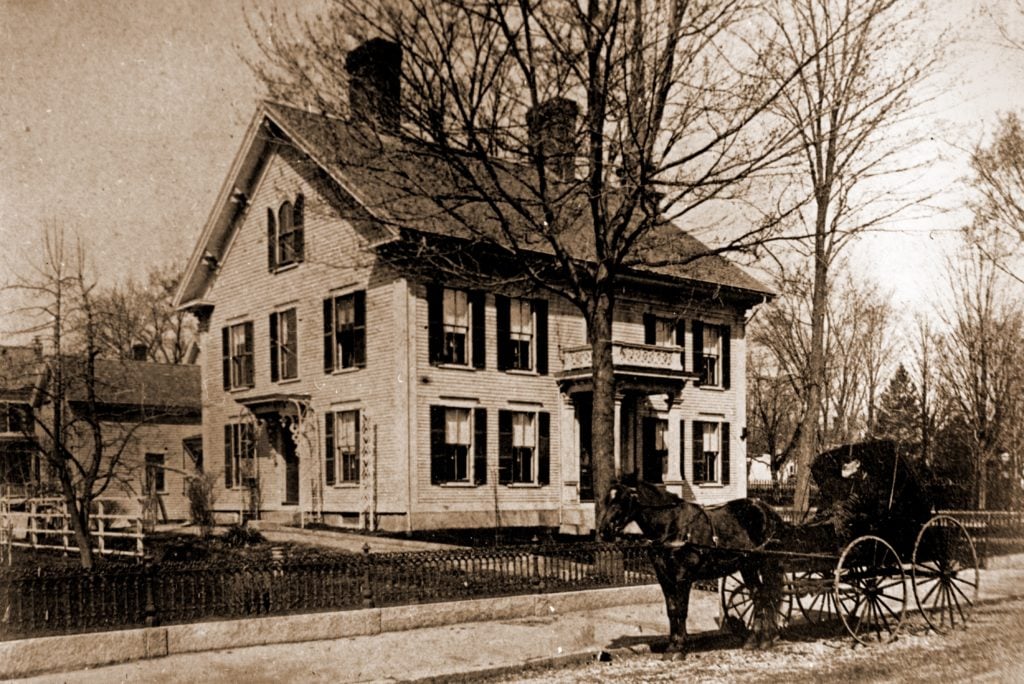
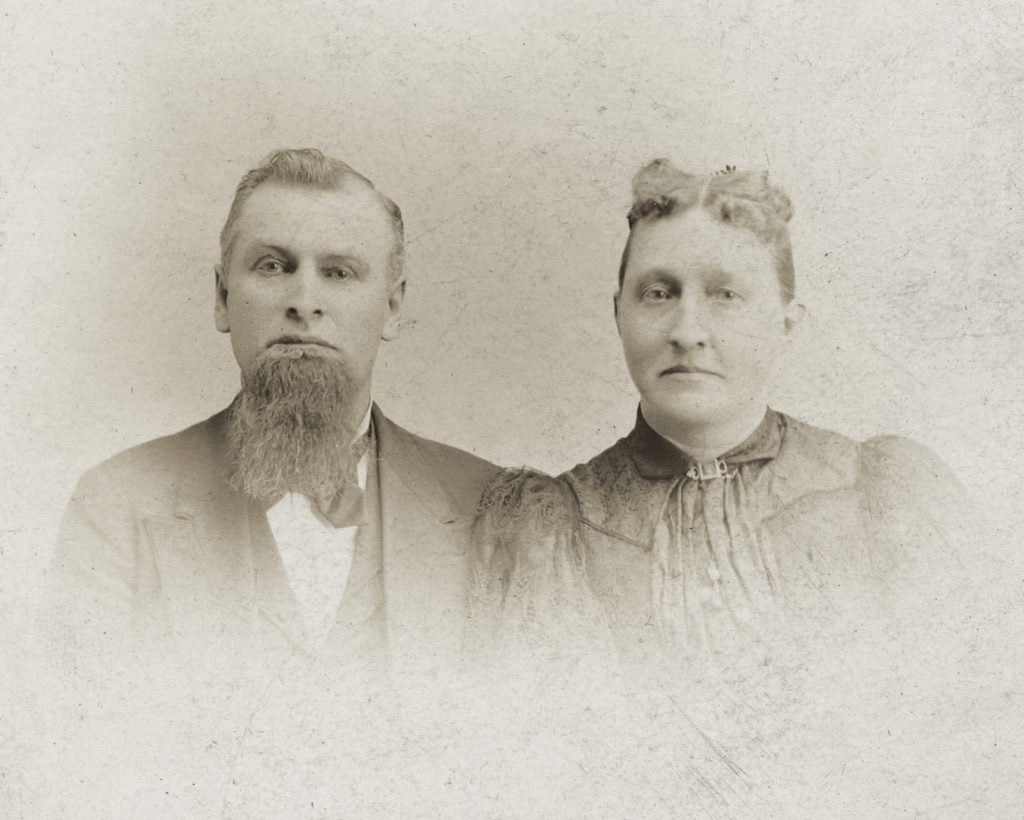
In early 1895, nine Christian Scientists were meeting and holding church services in Ezra and Elizabeth Buswell’s house in Concord.13 Over the next two years, the services gradually outgrew private parlors and rented halls in town, and Mrs. Eddy foresaw the need of a church for the swelling congregation.14 In the fall of 1897, she purchased the Russell estate, a colonial house on the corner of North State and School Streets,15 and by the end of October had “proposed to one of Concord’s best builders the plan for Christian Science Hall.”16
During the remodeling process, Mrs. Eddy “inspected the work every day, suggested the details outside and inside from the foundations to the tower, and saw them carried out.”17 One day, when ill health threatened the carpenter’s foreman, she healed him on the spot.18 On another day, she gave each of the workmen—17 in all—a five-dollar gold piece out of gratitude for their willingness to work on Thanksgiving Day.19
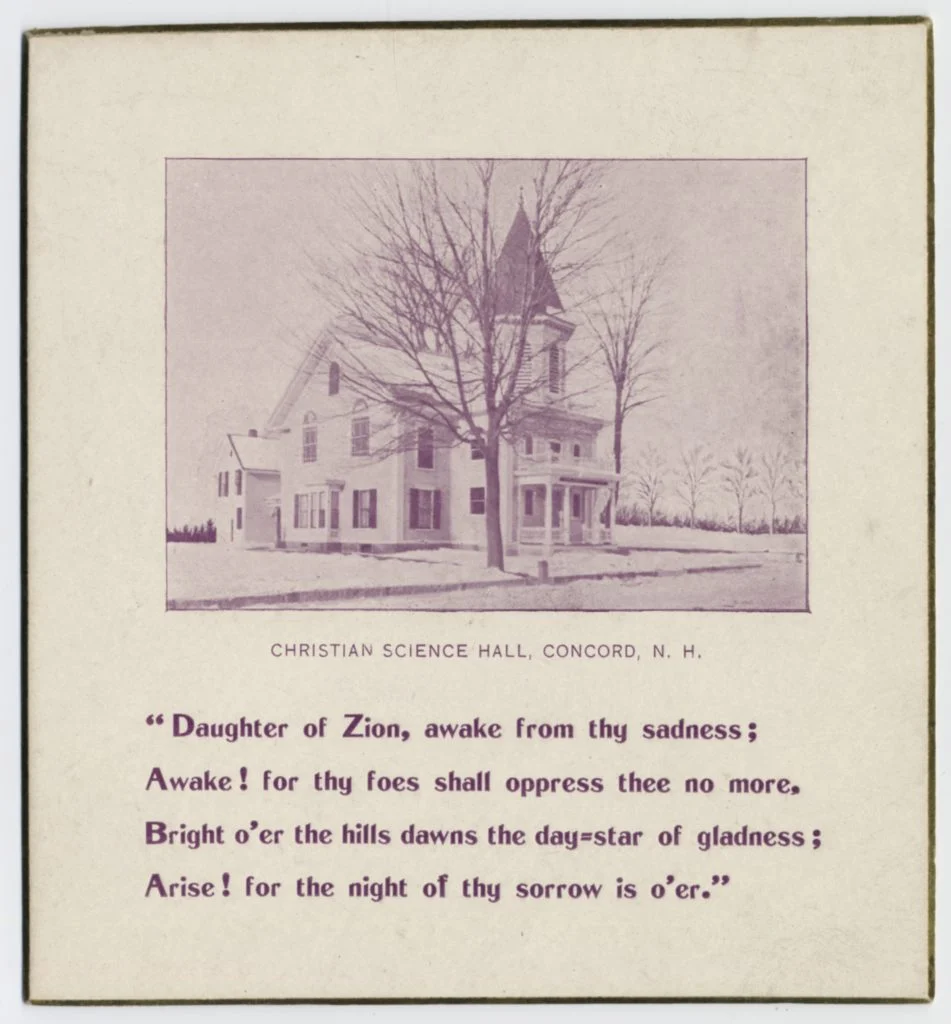
“Under her loving and watchful eye the workmen outdid themselves,” Tomlinson wrote, “and Christian Science Hall was completed and ready for occupancy in twenty-two working days.”20
By early December, the remodeling was complete. The former two-story house now offered an auditorium on the second floor—which could seat 200, and 30 more if push came to shove—and on the lower floor, a Reading Room, a practitioner’s office, and a suite of rooms for the Hall’s caretaker and residents, which often were the First and Second Readers.21 A vestibule and a porch were also added to the front of the building. The Concord Monitor dubbed the hall “one of the handsomest auditoriums in the city.”22
“I have provided for you a modest hall, in which to assemble as a sort of Christian Science kindergarten for teaching the ‘new tongue’ of the gospel with ‘signs following,’ of which St. Mark prophesies,” Mrs. Eddy wrote the congregation on the second Sunday service in December.23
After visiting the Hall in February to deliver a moving sermon on the 91st Psalm, Mrs. Eddy returned for two days in November 1898 to teach her final class. It had been almost a decade since she had taught at the Massachusetts Metaphysical College in Boston, and this special class would prepare about 70 students for the work that lay ahead. “The students in my last class in 1898,” Mrs. Eddy wrote, “are stars in my crown of rejoicing.”24
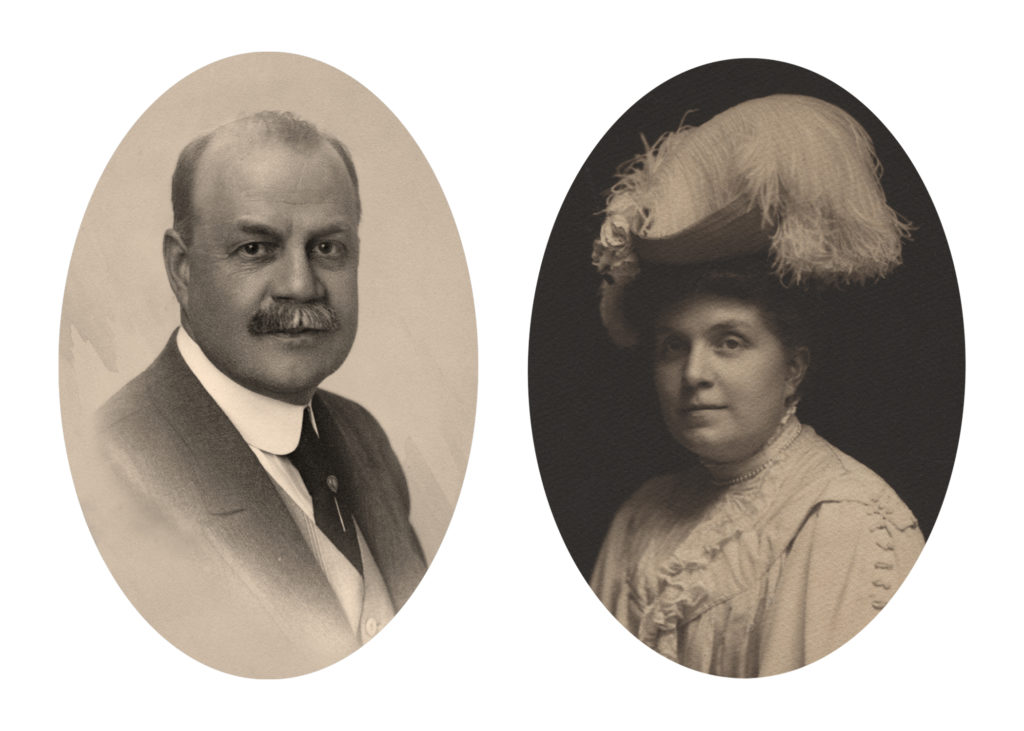
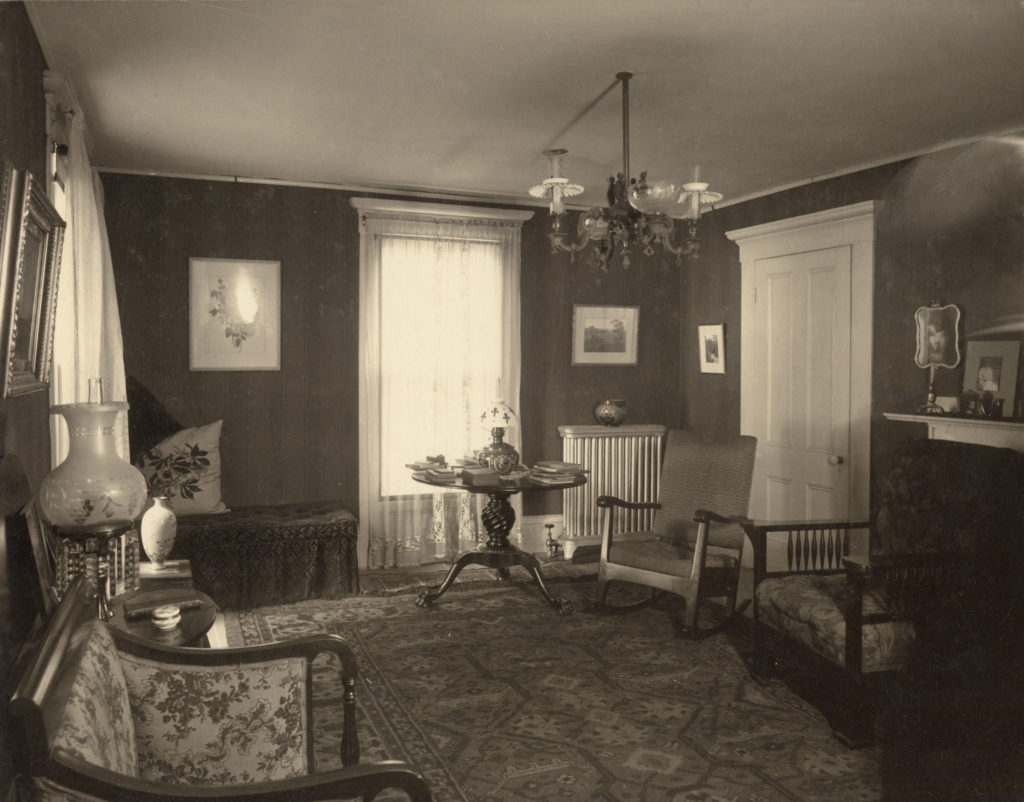
February 22, 1899 was another memorable day for the congregation in Concord. “In the annals of our denomination this church becomes historic,” Mrs. Eddy wrote on the day that First Church of Christ, Scientist, Concord, was formally organized.26
The fact that February 22 also commemorated George Washington’s birthday didn’t slip anyone’s notice.
“The action of last evening puts the Christian Science organization in this city upon a permanent footing,” reported the Concord Evening Monitor, “and it is both pertinent and significant that a church standing so emphatically for freedom from both sin and sickness should choose Washington’s birthday as a date for perfecting its status.”27
Mrs. Eddy also recognized its importance: “Memorable date, all unthought of till the day had passed! Then we beheld the omen, —religious liberty, —the Father of the universe and the father of our nation on concurrence.”28
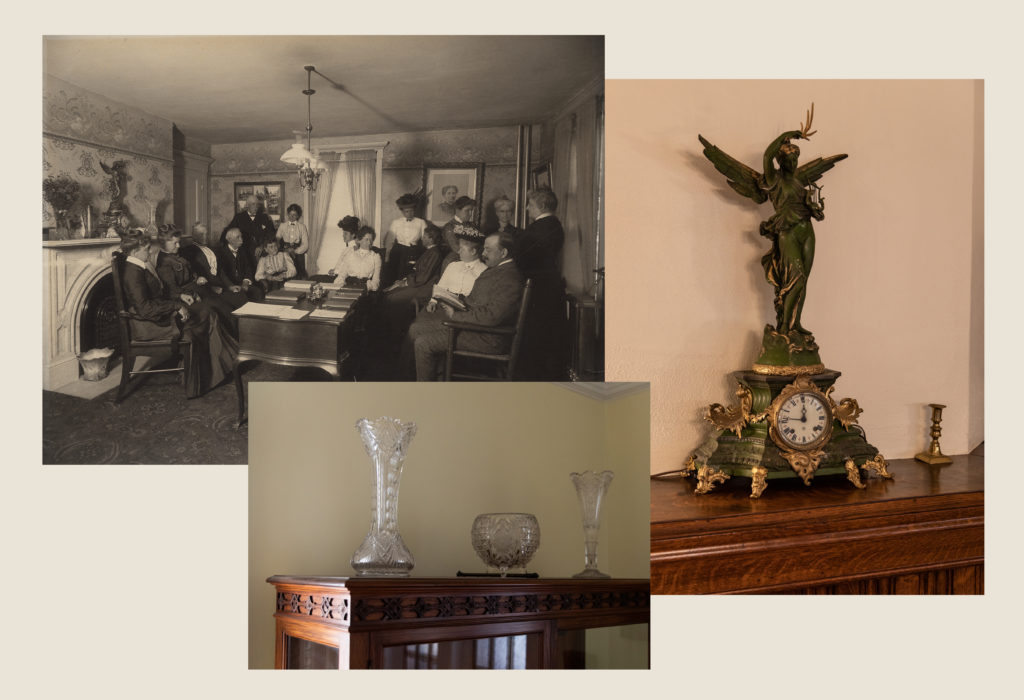
Over the next few years, Mrs. Eddy would visit Christian Science Hall on occasion, as would her staff.30 She would write inspiring messages to the Concord congregation, send beautiful flowers from Pleasant View, and deliver her last address away from home here.31
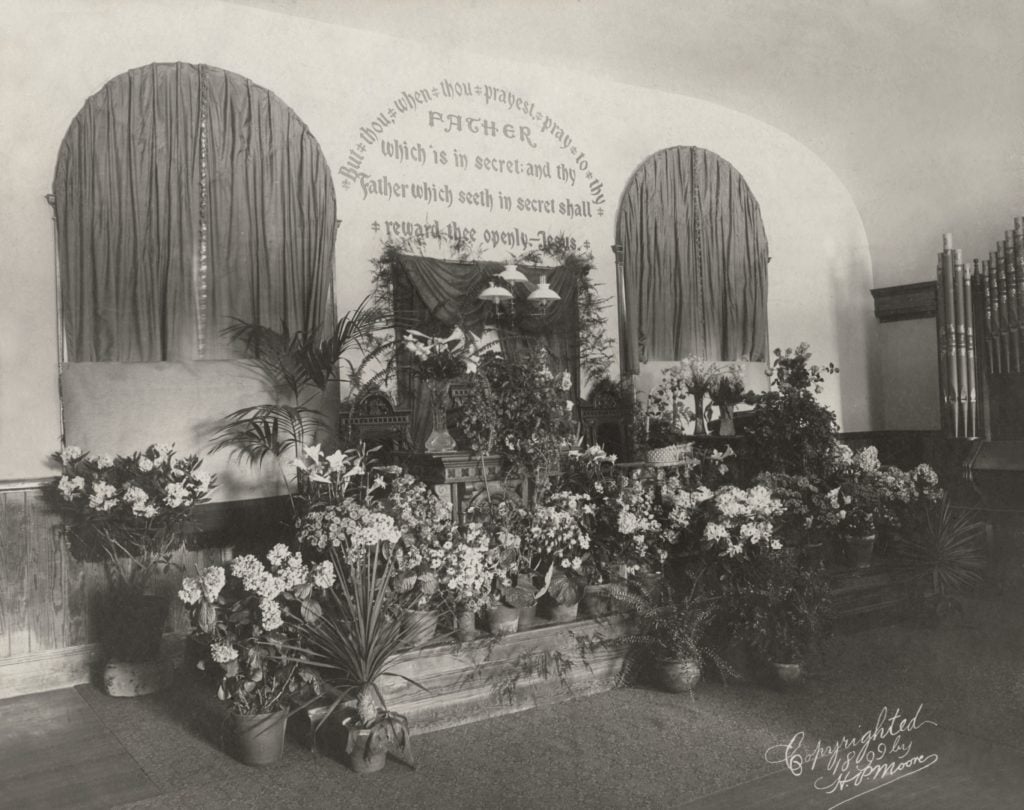
When the congregation eventually outgrew Christian Science Hall, Mrs. Eddy would once again give another gift to her hometown. She had planned, fitted, and financed Christian Science Hall, contributed to the paving of Pleasant Street and other local roads, and supported local celebrations like Old Home Week and the State Fair. Her next gift to Concord was to be a beautiful granite church edifice.
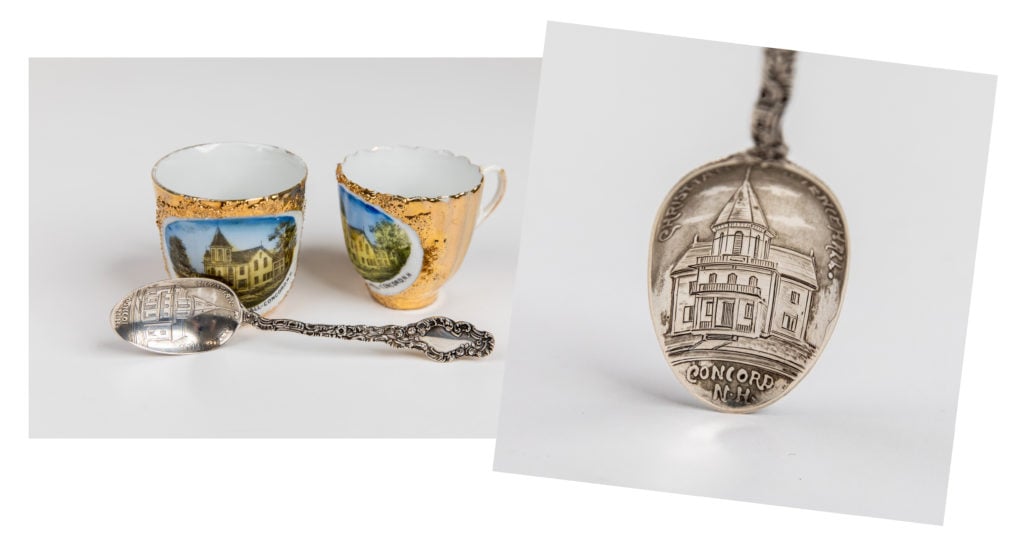
On June 1, 1903, Christian Science Hall was torn down to make way for the new church building. Mrs. Eddy had envisioned an edifice for the members of First Church of Christ, Scientist in Concord some years earlier. In 1898, she had given $100,000 (over $3.25 million today) to a trust to build a granite edifice in Concord, money which, according to Irving Tomlinson, amounted to about half of all her available funds at the time. Although it took longer than anticipated, by 1903, the time was finally ripe for a new church home.34
“It had been Mrs. Eddy’s earnest desire to preserve Christian Science Hall around which clustered so many happy memories,” Tomlinson wrote, but because the location was perfect, the Hall too small, and it was found impossible to move it elsewhere, it was razed instead.35
“Christian Science Hall will ever occupy a sacred spot in the memory of Christian Scientists who value familiar landmarks in the history of the movement,” recalled Tomlinson, who had seen the congregation build up in numbers since he first arrived in Concord in 1899.36
After the final meeting in the Hall in 1903, a newspaper gave this bittersweet report: “The deep sense of appreciation, manifest by reason of the active preparations for the handsome new church presented by Mrs. Eddy, was accompanied by a natural regret at the thought of parting from a place so dear to all.”37
Though “a place so dear to all” was to be demolished, the beautiful granite edifice of First Church of Christ, Scientist, Concord, would soon take its place, and would fulfill a hope that Mrs. Eddy had cherished since 1897.
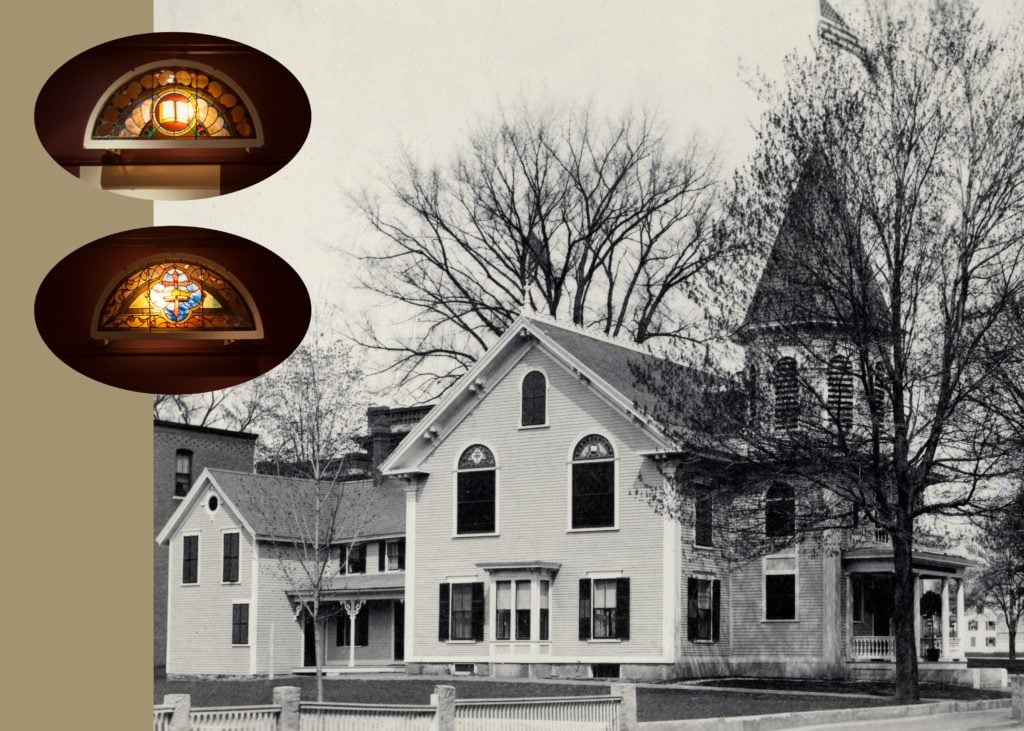
This is part two of a three-part series. The first article focused on Concord’s 1899 Old Home Week, and the third article looks more closely at First Church of Christ, Scientist, in Concord, New Hampshire.
